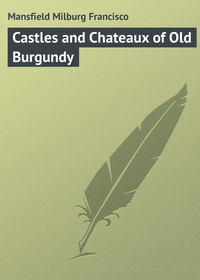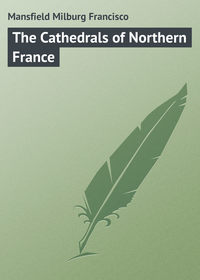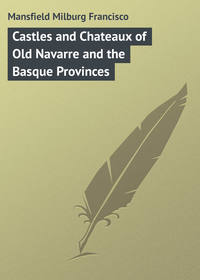 полная версия
полная версияDumas' Paris
Here, at “The Sword of the Brave Chevalier,” first met the “Forty-Five Guardsmen.” In the same street is, or was until recently, a modernized and vulgarized inn of similar name, which was more likely to have been an adaption from the pages of Dumas than a direct descendant of the original, if it ever existed. It is the Hôtel la Trémouille, near the Luxembourg, that figures in the pages of “Les Trois Mousquetaires,” but the hôtel of the Duc de Treville, in the Rue du Vieux-Colombier, has disappeared in a rebuilding or widening of this street, which runs from the Place de St. Sulpice to the Place de la Croix-Rouge.
All these places centre around that famous affaire which took place before the Carmelite establishment on the Rue Vaugirard: that gallant sword-play of Athos, Porthos, and Aramis, – helped by the not unwilling D’Artagnan, – against Richelieu’s minions, headed by Jussac.
Within the immediate neighbourhood, too, is much of the locale of “Les Trois Mousquetaires.” Here the four friends themselves lodged, “just around the corner, within two steps of the Luxembourg,” though Porthos more specifically claimed his residence as in the Rue de Vieux-Colombier. “That is my abode,” said he, as he proudly pointed to its gorgeous doorway.
The Hôtel de Chevreuse of “la Frondeuse duchesse,” famed alike in history and the pages of Dumas, is yet to be seen in somewhat changed form at No. 201 Boulevard St. Germain; its garden cut away by the Boulevard Raspail.
At No. 12 or 14 Rue des Fossoyeurs, beside the Panthéon, – still much as it was of yore, – was D’Artagnan’s own “sort of a garret.” One may not be able to exactly place it, but any of the decrepitly picturesque houses will answer the description.
It is a wonderfully varied and interesting collection of buildings which is found on the height of Ste. Geneviève, overlooking the Jardin and Palais du Luxembourg: the hybrid St. Etienne du Mont, the pagan Panthéon, the tower of the ancient Abbaye de Ste. Geneviève, and the Bibliothèque, which also bears the name of Paris’s patron saint.
The old abbey must have had many and varied functions, if history and romance are to be believed, and to-day its tower and a few short lengths of wall, built into the Lycée Henri Quatre, are all that remain, unless it be that the crypt and dungeons, of which one reads in “Chicot the Jester,” are still existent. Probably they are, but, if so, they have most likely degenerated into mere lumber-rooms.
The incident as given by Dumas relates briefly to the plot of the Guises to induce Charles IX., on the plea of some religious ceremony, to enter one of the monkish caches, and there compel him to sign his abdication. The plot, according to the novelist, was frustrated by the ingenious Chicot.
At all events, the ensemble to-day is one most unusual, and the whole locality literally reeks with the associations of tradition.
Architecturally it is a jumble, good in parts, but again shocking in other parts.
The Église St. Etienne du Mont is a weird contrast of architectural style, but its interior is truly beautiful, and on the wall near the south transept are two tablets, on which one may read the facts concerning Ste. Geneviève, which likely enough have for the moment been forgotten by most of us.
The old abbey must have been a delightful place, in spite of the lurid picture which Dumas draws of it.
Probably in none of Dumas’ romances is there more lively action than in “The Queen’s Necklace.” The characters are in a continual migration between one and another of the faubourgs. Here, again, Dumas does not forget or ignore the Luxembourg and its environment. He seems, indeed, to have a special fondness for its neighbourhood. It was useful to him in most of the Valois series, and doubly so in the D’Artagnan romances.
Beausire, one of the thieves who sought to steal the famous necklace, “took refuge in a small cabaret in the Luxembourg quarter.” The particular cabaret is likely enough in existence to-day, as the event took place but a hundred years ago, and Dumas is known to have “drawn from life” even his pen-portraits of the locale of his stories. At any rate, there is many a cabaret near the Luxembourg which might fill the bill.
The gardens of the Luxembourg were another favourite haunt of the characters of Dumas’ romances, and in “The Queen’s Necklace” they are made use of again, this time, as usual, as a suitable place for a promenade or a rendezvous of the fair Oliva, who so much resembled Marie Antoinette.
Like the Rue du Helder, celebrated in “The Corsican Brothers,” the Rue de Lille, where lived, at No. 29, De Franchi’s friend, Adrien de Boissy, is possessed of an air of semi-luxuriousness, or, at any rate, of a certain middle-class comfort.
It lies on the opposite side of the Seine from the river side of the Louvre, and runs just back of the site formerly occupied by the Duc de Montmorenci, where was held the gorgeous ceremony of the marriage of the Marquis St. Luc, of which one reads in “Chicot the Jester.”
There is not much of splendour or romance about the present-day Rue de Lille; indeed, it is rather commonplace, but as Dumas places the particular house in which De Boissy lived with definiteness, and, moreover, in that it exists to-day practically unaltered, there seems every good reason why it should be catalogued here.
CHAPTER XIII.
THE LOUVRE
“Paris renferme beaucoup de palais; mais le vrai palais de Paris, le vrai palais de la France, tout le monde l’a nommé, – c’est le Louvre.”
Upon the first appearance of “Marguerite de Valois,” a critic writing in Blackwood’s Magazine, has chosen to commend Dumas’ directness of plot and purpose in a manner which every lover of Dumas and student of history will not fail to appreciate. He says: “Dumas, according to his custom, introduces a vast array of characters, for the most part historical, all spiritedly drawn and well sustained. In various respects the author may be held up as an example to our own history-spoilers, and self-styled writers of historical romance. One does not find him profaning public edifices by causing all sorts of absurdities to pass, and of twaddle to be spoken, within their precincts; neither does he make his king and beggar, high-born dame and private soldier use the very same language, all equally tame, colourless, and devoid of character. The spirited and varied dialogue, in which his romances abound, illustrates and brings out the qualities and characteristics of his actors, and is not used for the sole purpose of making a chapter out of what would be better told in a page. In many instances, indeed, it would be difficult for him to tell his story, by the barest narrative, in fewer words than he does by pithy and pointed dialogue.”
No edifice in Paris itself, nor, indeed, in all France, is more closely identified with the characters and plots of Dumas’ romances than the Louvre. In the Valois cycle alone, the personages are continually flocking and stalking thither; some mere puppets, – walking gentlemen and ladies, – but many more, even, who are personages so very real that even in the pages of Dumas one forgets that it is romance pure and simple, and is almost ready to accept his word as history. This it is not, as is well recognized, but still it is a pleasant manner of bringing before the omnivorous reader many facts which otherwise he might ignore or perhaps overlook.
It really is not possible to particularize all the action of Dumas’ romances which centred around the Louvre. To do so would be to write the mediæval history of the famous building, or to produce an analytical index to the works of Dumas which would somewhat approach in bulk the celebrated Chinese encyclopædia.
We learn from “Le Vicomte de Bragelonne” of D’Artagnan’s great familiarity with the life which went on in the old château of the Louvre. “I will tell you where M. d’Artagnan is,” said Raoul; “he is now in Paris; when on duty, he is to be met at the Louvre; when not so, in the Rue des Lombards.”
This describes the situation exactly: when the characters of the D’Artagnan and the Valois romances are not actually within the precincts of the Louvre, they have either just left it or are about to return thither, or some momentous event is being enacted there which bears upon the plot.
Perhaps the most dramatic incident in connection with the Louvre mentioned by Dumas, was that of the massacre of St. Bartholomew’s night, “that bloody deed which culminated from the great struggle which devastated France in the latter part of the sixteenth century.”
Dumas throws in his lot with such historians as Ranke and Soldain, who prefer to think that the massacre which took place on the fête-day of St. Bartholomew was not the result of a long premeditated plot, but was rather the fruit of a momentary fanatical terror aroused by the unsuccessful attempt on the life of Coligny.
This aspect is apart from the question. The principal fact with which the novelist and ourselves are concerned is that the event took place much as stated: that it was from the Louvre that the plot – if plot it were – emanated, and that the sounding bell of St. Germain l’Auxerrois did, on that fateful night, indicate to those present in the Louvre the fact that the bloody massacre had begun.
The fabric itself – the work of many hands, at the instigation of so many minds – is an enduring monument to the fame of those who projected it, or who were memorialized thereby: Philippe-Auguste, Marie de Medici, François I., Charles IX., Henri IV., Louis XIV., Napoleon I., – who did but little, it is true, – and Napoleon III. – who did much, and did it badly.
Besides history, bloody deeds, and intrigue, there is also much of sentiment to be gathered from an observation of its walls; as witness the sculptures and decorations of Goujon and Lescot, the interlaced monogram G. H., of Henri and Gabrielle d’Estrées, and the superimposed crescents of the fair Diane de Poitiers. But such romances as these are best read in the pages of Dumas.
“To the French the Louvre is more than a palace; it is a sanctuary,” said an enthusiastic Frenchman. As such it is a shrine to be worshipped by itself, though it is pardonable to wish to know to-day just where and when the historic events of its career took place.
One can trace the outline, in white marble, of the ancient Château du Louvre, in the easterly courtyard of the present establishment; can admire the justly celebrated eastern colonnade, though so defective was the architect in his original plans that it overlaps the side walls of the connecting buildings some dozen or more feet; can follow clearly all the various erections of monarchs and eras, and finally contemplate the tiny columns set about in the garden of the Tuileries, which mark all that is left of that ambitious edifice.
The best description of the Tuileries by Dumas comes into the scene in “The Count of Monte Cristo,” when Villefort, – who shares with Danglars and Fernand the distinction of being the villain of the piece, – after travelling with all speed from Marseilles to Paris, “penetrates the two or three apartments which precede it, and enters the small cabinet of the Tuileries with the arched window, so well known as having been the favourite cabinet of Napoleon and Louis XVIII., as also that of Louis-Philippe.
“There, in this closet, seated before a walnut-tree table he had brought with him from Hartwell, and to which, from one of those fancies not uncommon to great people, he was particularly attached, the king, Louis XVIII., was carelessly listening to a man of fifty or fifty-two years of age, with gray hair, aristocratic bearing, and exceedingly gentlemanly attire, whilst he was making a note in a volume of Horace, Gryphius’s edition, which was much indebted to the sagacious observations of the philosophical monarch.”
Of course, an author of to-day would have expressed it somewhat differently, but at the time in which Dumas wrote, the little cabinet did exist, and up to the time of the destruction of the palace, at the Commune, was doubtless as much of a showplace in its way as is the window of the Louvre from which Charles IX. was supposed to have fired upon the fleeing Huguenots – with this difference: that the cabinet had a real identity, while the window in question has been more recently ascertained as not having been built at the time of the event.
Some one has mentioned Paris, the forgetter, as if modern Paris and its gay life – for assuredly it is gay, regardless of what the blasé folk may say or think – had entirely blotted out from its memory the horrors of St. Bartholomew’s night, the tragedies of La Roquette, the Conciergerie, or the Bastille.
This is so in a measure, however, though one has only to cross the square which lies before Les Halles, La Tour St. Jacques, or Notre Dame, to recall most vividly the tragedies which have before been enacted there.
The Louvre literally reeks with the intrigue and bloodshed of political and religious warfare; and Dumas’ picture of the murder of the admiral, and his version of the somewhat apocryphal incident of Charles IX. potting at the Protestant victims, with a specially made and garnished firearm, is sufficiently convincing, when once read, to suggest the recollections, at least, of the heartless act. From the Louvre it is but a step – since the Tuileries has been destroyed – to the Place de la Concorde.
When this great square, now given over to bird-fanciers, automobilists, and photograph-sellers, was first cleared, it was known as the Place de la Révolution. In the later volumes of the Valois romances one reads of a great calendar of scenes and incidents which were consummated here. It is too large a list to even catalogue, but one will recollect that here, in this statue surrounded place, with playing fountains glittering in the sunlight, is buried under a brilliance – very foreign to its former aspect – many a grim tragedy of profound political purport.
It was here that Louis XVI. said, “I die innocent; I forgive my enemies, and pray God to avert his vengeance for my blood, and to bless my people.” To-day one sees only the ornate space, the voitures and automobiles, the tricolour floating high on the Louvre, and this forgetful Paris, brilliant with sunlight, green with trees, beautified by good government, which offers in its kiosks, cafés, and theatres the fulness of the moment at every turn. Paris itself truly forgets, if one does not.
The Louvre as it is known to-day is a highly intricate composition. Its various parts have grown, not under one hand, but from a common root, until it blossomed forth in its full glory when the western front of Catherine de Medici took form. Unfortunately, with its disappearance at the Commune the completeness of this elaborate edifice went for ever.
One is apt to overlook the fact that the old Louvre, the ancienne Palais du Louvre, was a mediæval battlemented and turreted structure, which bore little resemblance to the Louvre of to-day, or even that of Charles, Henri, Catherine, or Marguerite, of whom Dumas wrote in the Valois romances.
The general ground-plan of the two distinct portions is the same, except for some minor additions of Napoleon I. and the connecting links built by Napoleon III., and many of the apartments are of course much the same, but there has been a general laying out of the courts anew, and tree-planting and grading of the streets and quais in the immediate neighbourhood; so much so that almost the entire aspect is changed. In spite of its compositeness, there is a certain aspect of uniformity of outline, though not of excellence of design.
The only relics of the Palace of the Tuileries are the colonnettes set about in the garden and surmounted by gilded balls.
CHAPTER XIV.
THE PALAIS ROYAL
It seems hardly necessary to more than mention the name of the Palais Royal, in connection with either the life or the writings of Alexandre Dumas, to induce a line of thought which is practically limitless. It was identified with Dumas’ first employment in the capital, and it has been the scene of much of the action of both the D’Artagnan and the Valois romances.
More than all else, however, though one is apt to overlook it somewhat, it is so closely identified with Richelieu that it is difficult to separate it from any event of French political history of the period.
It was built by Richelieu in 1629, on the site occupied by the Hôtels de Mercœur and Rambouillet, and was originally intended to have borne the name of Hôtel Richelieu. Toward 1634 it was enlarged, and was known as the Palais Cardinal. Finally it was presented, in 1642, to Louis XIII., and at his death came to Anne of Austria, when the royal family removed thither and it became known as the Palais Royal.
The incident of the flight of the royal family and Mazarin to St. Germain is one of the historic and dramatic incidents which Dumas used as one of the events in which D’Artagnan participated.
The court never returned to make use of the Palais Royal as a royal residence, and it became the refuge of Henriette de France, Queen of England and widow of Charles I. Thirty years later Louis XIV., who had fled from its walls when a child, gave it to his nephew Philippe d’Orleans, Duc de Chartres.
It was during the Régence that the famous fêtes of the Palais Royal were organized, – they even extended to what the unsympathetic have called orgies, – but it is certain that no town residences of kings were ever as celebrated for their splendid functions as was the Palais Royal in the seventeenth century.
In 1763 a fire brought about certain reconstructions at the expense of the city of Paris. In 1781, it became again the prey of fire; and Philippe-Égalité, who was then Duc de Chartres, constructed the three vast galleries which surround the Palais of to-day.
The boutiques of the galleries were let to merchants of all manner of foibles, and it became the most lively quarter of Paris.
The public adopted the galleries as fashionable promenades, which became, for the time, “un bazar européen et un rendez-vous d’affaires et de galanterie.”
It was in 1783 that the Duc d’Orleans constructed “une salle de spectacle,” which to-day is the Théâtre du Palais Royal, and in the middle of the garden a cirque which ultimately came to be transformed into a restaurant.
The purely theatrical event of the history of the Palais Royal came on the 13th of July, 1789, when at midday – as the coup of a petit canon rang out – a young unknown avocat, Camille Desmoulins, mounted a chair and addressed the throng of promenaders in a thrilling and vibrant voice:
“Citoyens, j’arrive de Versailles!– Necker is fled and the Baron Breteuil is in his place. Breteuil is one of those who have demanded the head of Mirabeau … there remains but one resource, and that ‘to arms’ and to wear the cockade that we may be known. Quelle couleur voulez-vous?”
With almost a common accord the tricolour was adopted – and the next day the Bastille fell.
Dumas’ account of the incident, taken from “The Taking of the Bastille,” is as follows:
“During this time the procession kept on advancing; it had moved obliquely to the left, and had gone down the Rue Montmartre to the Place des Victoires. When it reached the Palais Royal some great impediment prevented its passing on. A troop of men with green leaves in their hats were shouting ‘To arms!’
“It was necessary to reconnoitre. Were these men who blocked up the Rue Vivienne friends or enemies? Green was the colour of the Count d’Artois. Why then these green cockades?
“After a minute’s conference all was explained.
“On learning the dismissal of Necker, a young man had issued from the Café Foy, had jumped upon a table in the garden of the Palais Royal, and, taking a pistol from his breast, had cried ‘To arms!’
“On hearing this cry, all the persons who were walking there had assembled around him, and had shouted ‘To arms!’
“We have already said that all the foreign regiments had been collected around Paris. One might have imagined that it was an invasion by the Austrians. The names of these regiments alarmed the ears of all Frenchmen; they were Reynac, Salis Samade, Diesbach, Esterhazy, Roemer; the very naming of them was sufficient to make the crowd understand that they were the names of enemies. The young man named them; he announced that the Swiss were encamped in the Champs Elysées, with four pieces of artillery, and that they were to enter Paris the same night, preceded by the dragoons, commanded by Prince Lambesq. He proposed a new cockade which was not theirs, snatched a leaf from a chestnut-tree and placed it in the band of his hat. Upon the instant every one present followed his example. Three thousand persons had in ten minutes unleaved the trees of the Palais Royal.
“That morning no one knew the name of that young man; in the evening it was in every mouth.
“That young man’s name was Camille Desmoulins.”
After 1793 the Palais Royal was converted, by decree, into the Palais et Jardin de la Révolution; and reunited to the domains of the state. Napoleon I. granted its use to the Tribunal for its seances, and Lucien Bonaparte inhabited it for the “Hundred Days.” In 1830 Louis-Philippe, Duc d’Orleans, gave there a fête in honour of the King of Naples, who had come to pay his respects to the King of France. Charles X. assisted as an invited guest at the function, but one month after he had inhabited it as king.
Under Napoleon III. the Palais Royal was the residence of Prince Jerome, the uncle of the emperor, afterward that of his son the Prince Napoleon, when the fleur-de-lis sculptured on the façade gave way before escutcheons bearing the imperial eagles, which in turn have since given way to the Republican device of “’48” – “Liberté, Égalité, Fraternité.”
It is with a remarkable profusion of detail – for Dumas, at any rate – that the fourteenth chapter of “The Conspirators” opens.
It is a veritable guide-book phraseology and conciseness, which describes the streets of the Palais Royal quarter:
“The evening of the same day, which was Sunday, toward eight o’clock, at the moment when a considerable group of men and women, assembled around a street singer, who was playing at the same time the cymbals with his knees and the tambourine with his hands, obstructed the entrance to the Rue de Valois, a musketeer and two of the light horse descended a back staircase of the Palais Royal, and advanced toward the Passage du Lycée, which, as every one knows, opened on to that street; but seeing the crowd which barred the way, the three soldiers stopped and appeared to take counsel. The result of their deliberation was doubtless that they must take another route, for the musketeer, setting the example of a new manœuvre, threaded the Cour des Fontaines, turned the corner of the Rue des Bons Enfants, and, walking rapidly, – though he was extremely corpulent, – arrived at No. 22, which opened as by enchantment at his approach, and closed again on him and his two companions.
“… The crowd dispersed. A great many men left the circle, singly, or two and two, turning toward each other with an imperceptible gesture of the hand, some by the Rue de Valois, some by the Cour des Fontaines, some by the Palais Royal itself, thus surrounding the Rue des Bons Enfants, which seemed to be the centre of the rendezvous.”
The locality has not changed greatly since the times of which Dumas wrote, and if one would see for himself this Rue de Bons Enfants, Numéro 22, and try to find out how the Regent of France was able to climb over the roof-tops to the Palais Royal, for a wager, he may still do so, for apparently the roof-tops have changed but little. The especial connection of the Rue des Bons Enfants with literature is perhaps Sylvestre’s establishment, which will, for a price, sell you almost any French celebrity’s autograph, be he king, prince, painter, or litterateur.
In the “Vicomte de Bragelonne” there is a wonderfully interesting chapter, which describes Mazarin’s gaming-party at the Palais Royal.
In that it enters somewhat more into detail than is usual with Dumas, it appears worth quoting here, if only for its description of the furnishing of the salle in which the event took place, and its most graphic and truthful picture of the great cardinal himself:









